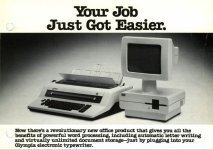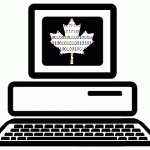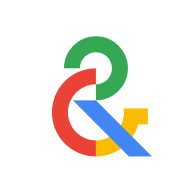In my collection of Olivetti electronic typewriters I have the following with computer interfaces:
Underwood 3000, basically a Praxis 30 in different design, with 3rd party parallel interface which works over the keyboard matrix of the typewriter. Got it to work on Commodore 64 user port, but not on PC or Atari ST, maybe they are too fast.
Praxis 35, with 3rd party serial interface which works over keyboard matrix. No idea which communication parameter setup, didn't got it to print
Daisy 35, a Praxis 35 with new base board from Dontenwill (Munich), has parallel and serial interface, but pinout and communication parameter unknown.
ET Compact 60, with the official Olivetti serial LCU, works just fine, for example with 1ST Word+ on ATARI ST or MS-Office 365 (some wrong characters due to different character set)
ET 201, with parallel port interface which prints over keyboard matrix. The interface is with full tech doc from the developer
ET 121 with serial interface (ETV Kit), ETV 300 firmware, communication parameters unknown, but just works fine with my ETV 300 (cp/m wordprocessor)
ET 121 with serial interface (ETS Kit), ETS 1010 firmware, communication parameters unknown, no ETS 1010 available (cp/m86 wordprocessor)
ET 225 with serial interface (ETV Kit), ETV 300 firmware, communication parameters unknown, but just works fine with my ETV 300 (cp/m wordprocessor)
ET 116 with LCU 116, 2 port serial interface, user manual for LCU is there, so I can set up communications parameters, just works fine with any computer which can print over serial interface, even Windows 10 MS-Office works with ASCII printer driver (some wrong characters due to different character set)
ET 2200, ET 2250 and ET 2250MD with XT keyboard interface. They can be connected to XT class computer and need special MS-DOS driver, zhe the typewriter works as a PC keyboard and LPT1: prints are redirected to the XT keyboard interface, so the typewriter prints... Normally they are connected to ETV 2900 or VM 2000 MS-DOS based wordprocessor (which is allmost the same as Olivetti M200 PC).
ET 2300 with parallel interface, unfortunatelly the ET 2300 is defective, I wasn't able to fix it yet
ET 2500 with parallel interface, this one just works fine, with ASCII printer driver even in Win 10 MS-Office (some wrong characters due to different character set)
All of the ET2000 series typewriters can support optional serial or parallel interface. ET 111, 112, 115 and 116 can support optional serial or parallel interface. ET 231, 225 and ET 351 can support serial or parallel port interface. Lookung on the home/portable typewriter series only ET Compact 60 and 70 can have optional serial or parallel interface.
Additionally I have a Triumph Adler Gabriele 9009 with serial IEC interface for Commodore 64.
If I haven't forgot the one or other, that's it for now.



